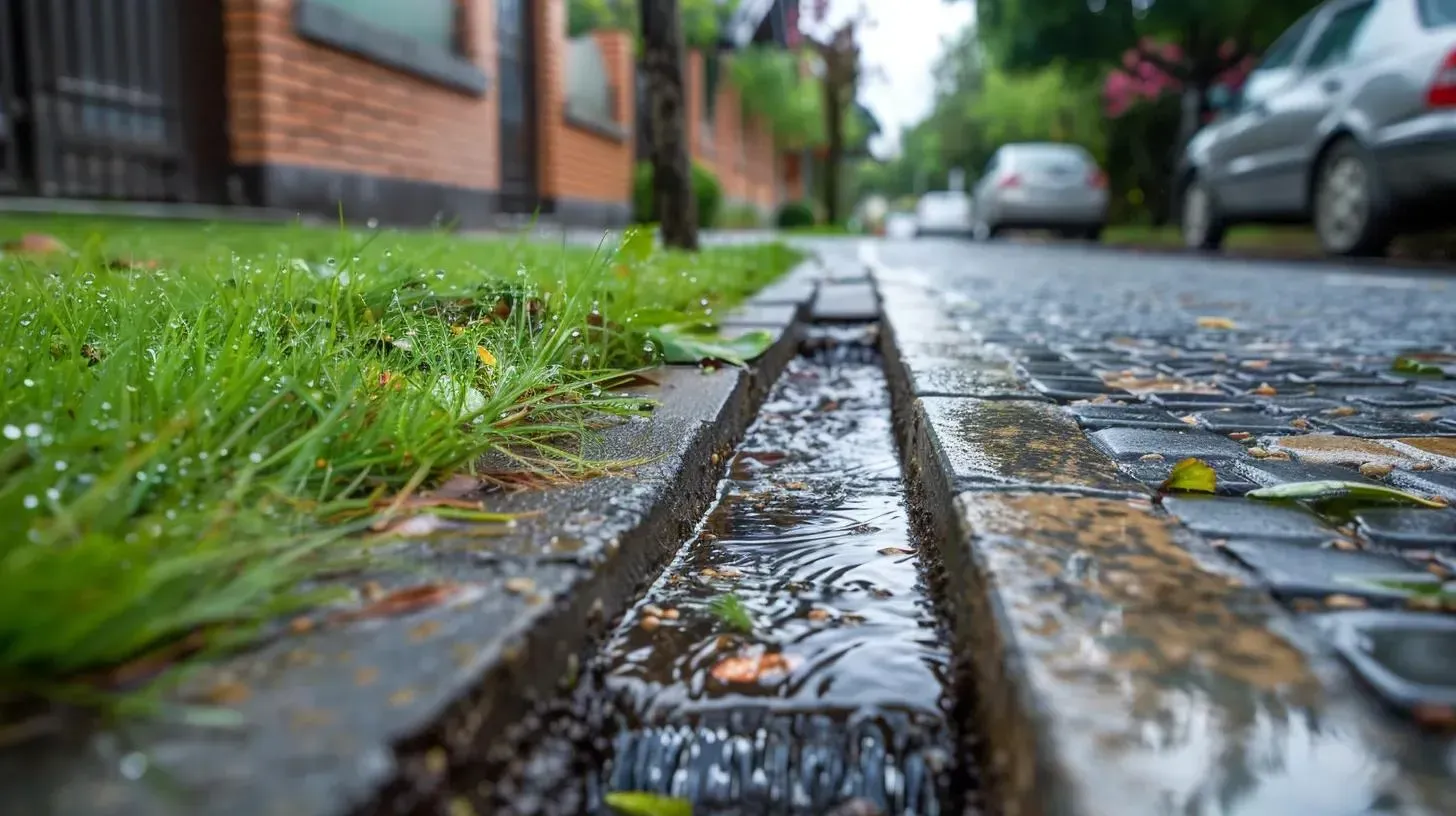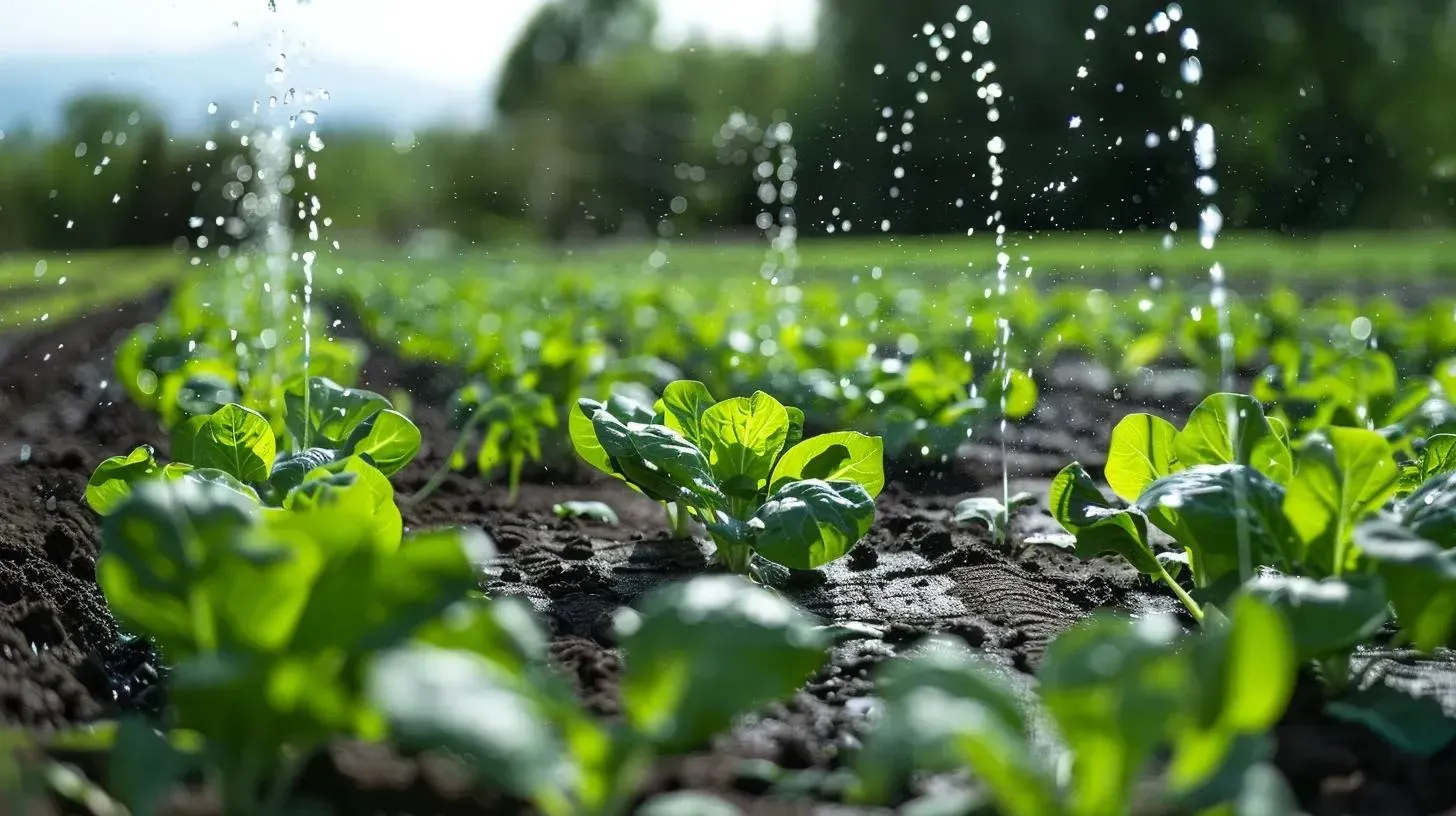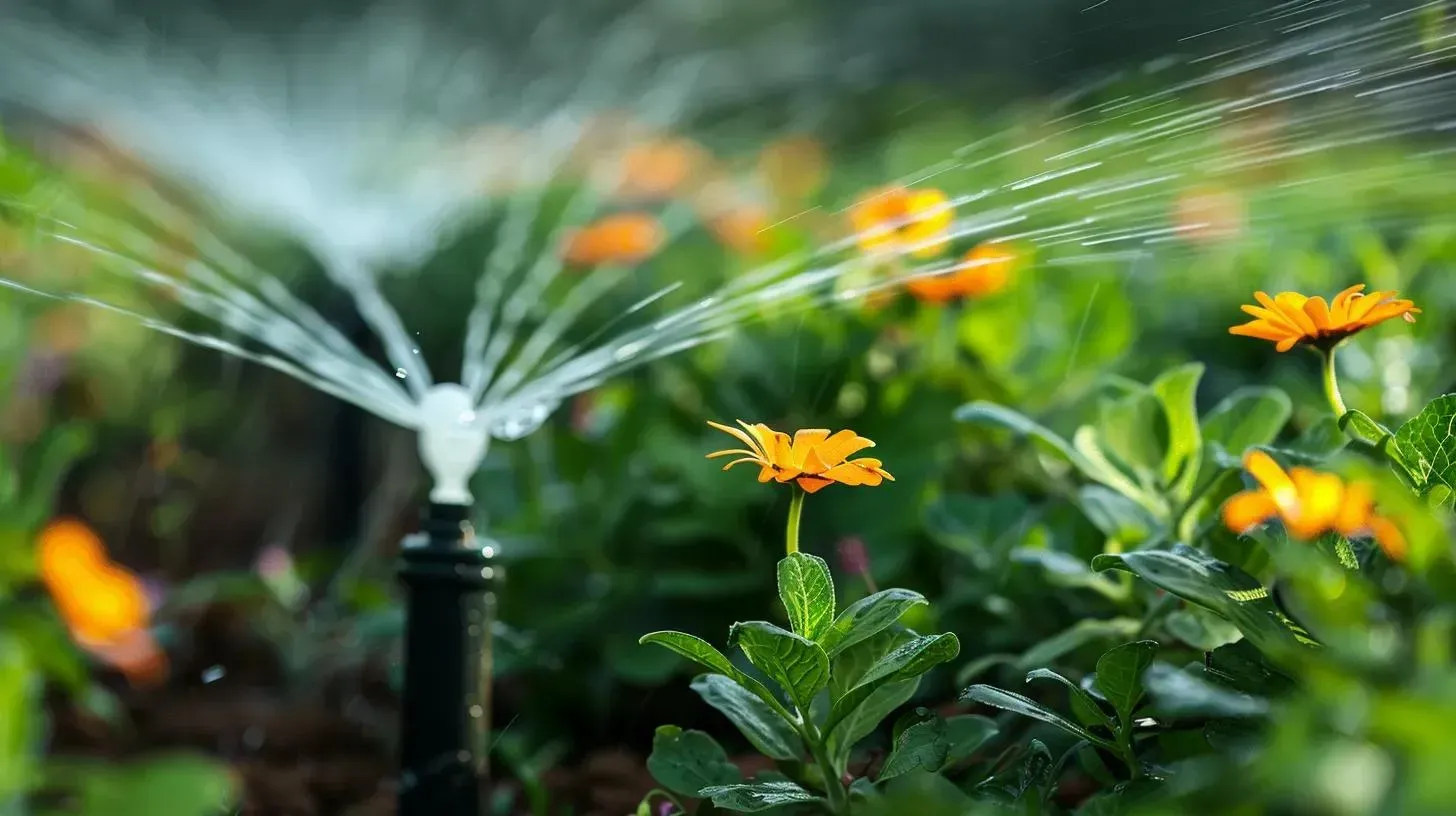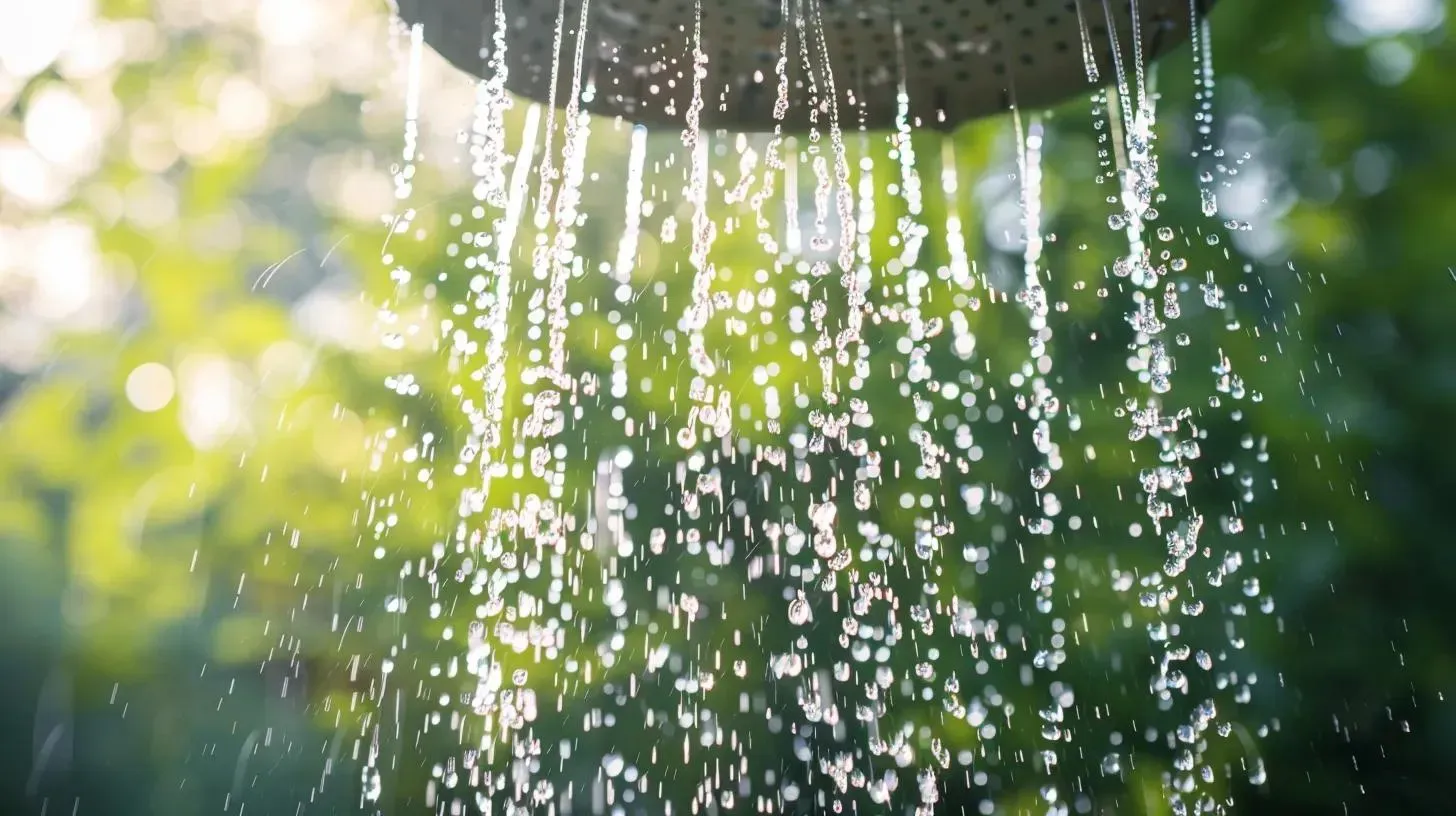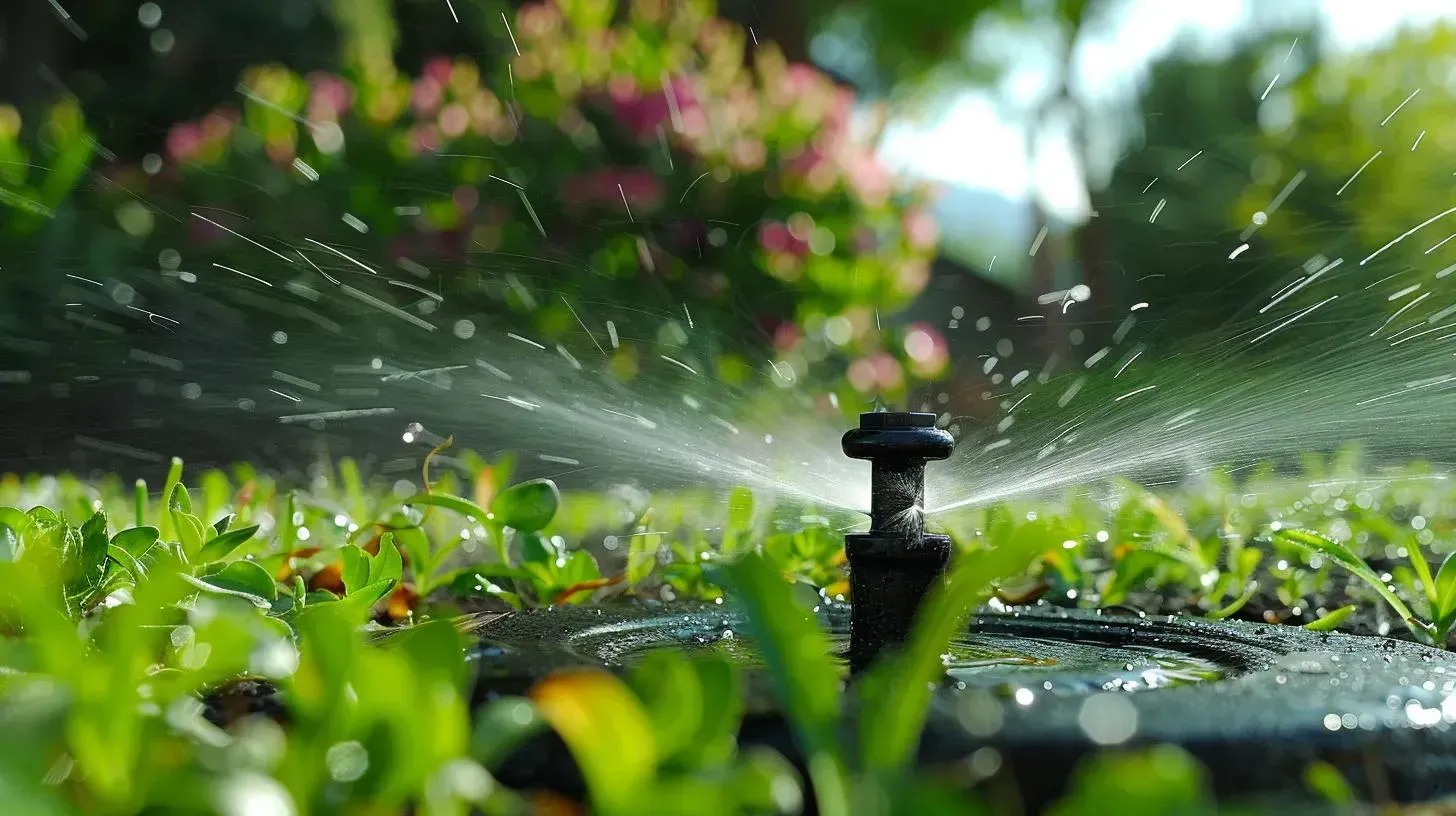How can smart irrigation systems reduce water waste during Williamsburg’s hot, humid summers?
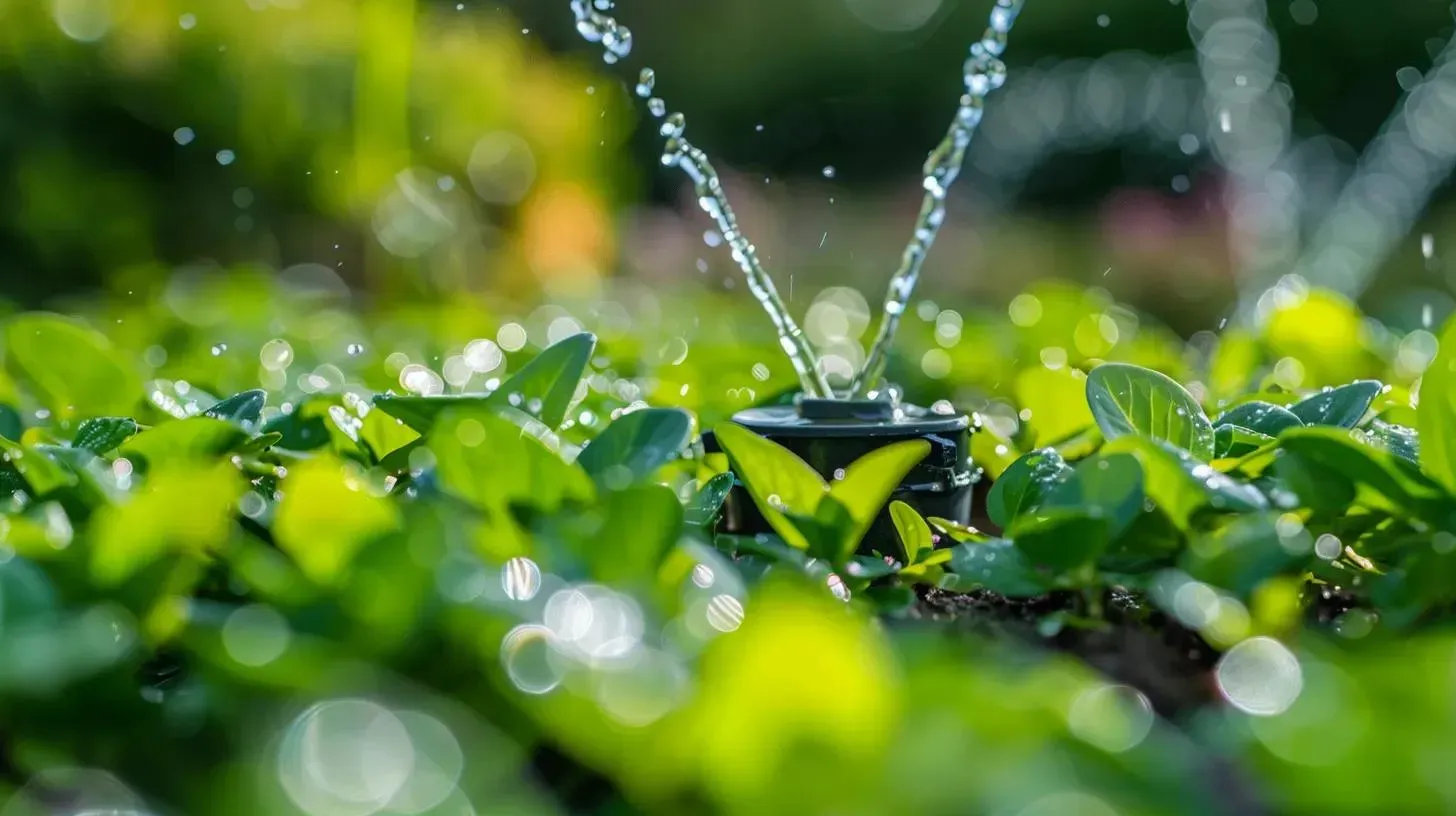
It is a uniquely frustrating experience to watch your meticulously maintained lawn suffer under the intense heat of a Virginia summer, only to realize that the water you applied moments ago may have been largely wasted. Williamsburg, with its historical significance and beautifully manicured landscapes, faces a dual challenge: the necessity of maintaining property aesthetics against the backdrop of increasingly hot, humid, and unpredictable weather patterns. Traditional irrigation systems, reliant on simple timers, are fundamentally incapable of responding to these dynamic conditions, often leading to severe water waste, poor plant health, and needlessly inflated utility bills. If you are looking for a reliable and knowledgeable partner to help transition your property into a model of water efficiency, choosing a reputable Irrigation Company in Williamsburg, VA, is the critical first step toward effective change.
This comprehensive guide delves deep into the technological solutions designed to address the unique ecological and regulatory demands of the Hampton Roads area. We will explore exactly how modern intelligent systems leverage local data to deliver only the precise amount of water your landscape needs, ensuring a healthier lawn while protecting the precious local water resources, such as the stressed Chickahominy/Piney Point aquifer system.
Why is Traditional Watering in Williamsburg an Inefficient Use of Water?
The conventional "set-it-and-forget-it" sprinkler timer, while convenient in its simplicity, is the primary culprit behind landscape water inefficiency across James City County and beyond. These fixed schedules, which were programmed months ago, cannot react when an unexpected thunderstorm dumps an inch of rain, or when a sudden heatwave spikes soil evaporation rates. They irrigate blindly, resulting in two major problems: overwatering and underwatering, both of which severely stress the turf and waste thousands of gallons annually.
When considering a partner for maximizing your landscape's potential, finding the right Irrigation Company Williamsburg VA means choosing one that understands these specific regional complexities. The climate here is defined not just by heat, but by substantial swings in humidity and intense, short bursts of rainfall, which standard systems simply cannot process.
The humid coastal environment of Virginia complicates the watering equation further. High relative humidity can trick superficial observation, making the lawn look moist when the root zone is actually desiccated, or conversely, encouraging fungal growth when water is applied unnecessarily. These local environmental factors demand a dynamic, data-driven approach, which is the core principle behind true water-efficient irrigation.
The Local Climate Reality: Heat and Humidity
Williamsburg’s summers are characterized by long periods of intense heat where temperatures routinely climb above 90°F, often punctuated by significant humidity coming off the Chesapeake Bay. This combination dramatically increases a phenomenon known as Evapotranspiration (ET), the sum of water lost from the soil surface (evaporation) and water lost from the plant leaves (transpiration). When humidity is high, the ET rate might slightly decrease, but the plant’s moisture stress remains high due to the surrounding heat.
The increasing frequency of heat waves, with Williamsburg expecting significantly more days over 95°F in the coming decades, places even greater strain on unoptimized landscapes. Fixed systems have no way to compensate for this accelerated water demand, leading either to severe dehydration or, when owners manually override the system, massive overwatering. This reactive human behavior is often just as wasteful as the fixed timer itself.
Moreover, the heavy, localized rain events—which are also increasing in intensity—mean that landscapes can go from bone-dry to saturated in a matter of hours. A traditional system set to run Tuesday morning will waste water entirely if a downpour occurred Monday night. The resulting runoff can carry fertilizers and pollutants into storm drains, negatively impacting local bodies of water like Lake Matoaka.
Understanding the Outdoor Water Use Ordinance
A critical, often misunderstood element of landscape management in the region is the James City County (JCC) Outdoor Water Use Ordinance. This regulation is designed to promote crucial water conservation practices, especially during the peak demand season between May 1st and September 30th. This ordinance directly dictates when outdoor water use is permitted, making timing a non-negotiable factor.
The ordinance enforces a strict daytime ban on irrigation between 9 a.m. and 5 p.m., the time when evaporation is highest, to minimize waste. Furthermore, it regulates which days properties can water: even-numbered street addresses can water on Tuesday, Thursday, and Saturday, while odd-numbered addresses water on Wednesday, Friday, and Sunday. No outdoor watering is permitted on Mondays.
While essential for managing the limited supply from the Waller Mill Reservoir, these fixed days and blackout hours still result in waste for conventional systems. If a property’s assigned watering day is Thursday, but it rained heavily Wednesday, the system will still run its full cycle unnecessarily. Smart systems, particularly those that integrate smart controllers Williamsburg VA, are the only way to comply with the ordinance while ensuring every drop applied is actually beneficial and necessary.
The Problem with Fixed Timers
A fixed timer operates based on an arbitrary user setting, which is usually a guess based on the assumption of average summer weather. It does not account for the specific needs of different plant types, the variable soil composition of different zones (e.g., loam in Queen's Lake versus heavy clay in New Town), or the daily fluctuations in solar radiation and wind speed.
This lack of environmental awareness leads to deep inefficiencies. For instance, if a fixed timer is set to run for 30 minutes, it may deliver too much water for a newly shaded area but too little for a spot exposed to all-day sun. The water that isn't absorbed by the roots is lost to runoff or deep percolation below the root zone, contributing nothing to the plant’s health but everything to the water bill and the stress on groundwater resources. The move away from this outdated technology is the defining characteristic of modern, responsible landscape management.
The Technological Core: How Smart Controllers Function
The advent of smart irrigation controllers represents a paradigm shift from blind watering to precision hydrology, effectively turning your irrigation system from a static timer into a sophisticated weather station and plant health monitor. These controllers, which often feature Wi-Fi connectivity and remote management via smartphone applications, are the brains of a modern water-efficient system. They don’t just count time; they calculate water deficit.
These devices operate on complex algorithms that continually analyze multiple data points to compute the precise water requirement, a metric known as "water budgeting." This continuous analysis ensures that the system is providing just the right amount of water—no more and no less—to meet the daily summer water conservation goals of the property owner and the community. This technology ensures maximum efficiency for your landscape needs.
Evapotranspiration (ET) Systems
One of the most effective and widely adopted smart controller technologies relies on the Evapotranspiration (ET) measurement. ET is the standard scientific measure of how much water a plant and the soil surface lose in a 24-hour period. By determining the ET rate, the controller knows exactly how much water needs to be replaced.
ET controllers use local meteorological data—often pulled from regional weather stations or, in advanced setups, from an on-site weather sensor—to calculate this loss. Factors like temperature, solar radiation, wind speed, and humidity are fed into the controller's algorithm. If a particularly sunny and windy day results in high ET, the system automatically increases the watering duration for the next cycle. If it's cool and cloudy, the duration is reduced or postponed entirely. This is the essence of dynamic water management.
By constantly adjusting based on real water loss, ET controllers eliminate the guesswork inherent in fixed-schedule watering. Homeowners who install these systems can expect significant and verifiable water savings, sometimes reducing outdoor consumption by 30% to 50%, a key component of effective water-efficient irrigation. A professional installation by a team that understands this technology, like Hampton Roads Irrigation & Landscape, ensures the system is calibrated correctly to your specific site, soil, and plant material.
Real-Time Weather Integration
Beyond simple rain sensors—which only detect rainfall after it has started—modern smart controllers integrate predictive and real-time data. These devices connect to local weather feeds (similar to those used by meteorologists) and global weather services. This predictive capability allows the system to “pre-empt” a watering cycle.
For example, if a heavy rain event is forecast for 6 a.m. Tuesday, the smart controller, set to run at 4 a.m., will automatically skip the cycle. The accumulated rainfall from the expected storm is then factored into the landscape's total water balance, and the next watering cycle is delayed by days, ensuring that the soil remains at an optimal, not saturated, moisture level. This adherence to meteorological reality is crucial for both water saving and maintaining turf health in the high humidity of the Tidewater region.
Signal-Based vs. On-Site Measurement
Smart controllers primarily fall into two categories for obtaining their crucial data. Signal-based controllers receive daily ET and weather data wirelessly from a nearby regional weather station maintained by a professional service. This is often the most cost-effective solution for residential use.
On-site measurement controllers, conversely, use sensors installed directly on the property—such as miniature weather stations or rain gauges. While offering hyper-local accuracy, this option is typically more complex and is often utilized for large commercial properties or highly specialized landscapes where microclimate variations are a major factor. The choice between these two advanced options is best determined through a professional site assessment. When exploring the best system for your property, consulting our reviews can give you insight into which technology has provided the best results for your neighbors with similar landscape needs and climate patterns.
Precision Application: The Role of Soil Moisture Sensors
While weather-based controllers estimate water need from the air, soil moisture sensors (SMS) provide a critical, ground-level feedback loop, measuring the actual water content in the root zone. They act as the ultimate check on the system, overriding any scheduled watering if the soil already contains sufficient moisture, regardless of what the weather model predicted.
The installation of soil moisture sensors is particularly valuable in the Williamsburg area due to the variability of the local terrain. Even properties just a few miles apart can have wildly different soil compositions, affecting water retention and drainage. These sensors ensure that the controller is making decisions based on the actual conditions beneath your lawn, leading to unmatched water conservation precision.
Adjusting for Williamsburg Soil
The dominant native soil in the region, the Williamsburg Series, is often a well-drained silt loam, meaning it can absorb water relatively well but also allows for decent drainage. However, many newer developments incorporate fill dirt or have sections of heavy clay (like in parts of New Town) which retain water significantly longer, making them prone to waterlogging and root rot if overwatered. Conversely, areas with more sand (common in coastal parts of the Tidewater region) drain rapidly.
A fixed timer cannot differentiate between these soil types. A smart system utilizing SMS, however, can be programmed with multiple sensors placed in different soil zones. The sensor in the clay bed will prevent watering until the moisture level drops below a set threshold, while the sensor in a faster-draining loam area will trigger watering sooner. This site-specific zoning, adjusted by real-time soil data, is fundamental to water-efficient irrigation.
Targeting the Root Zone
The goal of all irrigation is to provide water to the plant’s active root zone, typically the top 6 to 8 inches of the soil for common turfgrasses. Shallow watering encourages shallow root growth, making the plant more susceptible to drought and heat stress. Deep, infrequent watering is scientifically proven to build stronger, deeper root systems that are more resilient.
Soil moisture sensors are strategically placed at the ideal root depth. The controller is then programmed to run until the sensor detects that the root zone has been fully replenished, encouraging the deep water penetration that builds strong roots. Once the system achieves the target saturation, it shuts off immediately, regardless of the timer, thereby preventing wasted water that would otherwise soak past the roots and become unusable.
Preventing Runoff and Leaching
Excessive or rapid watering, especially on the slight slopes and high terraces characteristic of the Williamsburg Series soil, leads directly to water runoff. This surface water carries away valuable topsoil and nutrients, wasting the water and potentially polluting local waterways. Furthermore, overwatering can push fertilizers (a process called leaching) past the root zone and into the groundwater, contributing to nutrient loading in the Chickahominy/Piney Point aquifer.
Smart controllers, particularly those employing cycle-and-soak programs, mitigate this risk. Instead of applying all the water in one long cycle that overwhelms the soil's infiltration rate, the system breaks the total watering time into multiple short bursts, with soak periods in between. This allows the water to slowly and fully absorb, preventing surface runoff and ensuring maximum uptake by the turf, minimizing leaching, and achieving true summer water conservation. If you have any questions about how this technology can specifically adapt to your residential or commercial property’s needs, please contact us directly for a detailed consultation.
Beyond the Controller: Water-Efficient Delivery Methods
While the smart controller is the brain of the system, the hardware—the valves, pipes, and emitters—are the muscle. A smart controller alone cannot make an inefficient, leaky, or poorly designed sprinkler system water-efficient. The true reduction in water waste comes from combining intelligent control with optimized water delivery components. The overall system must be modernized to deliver water precisely and evenly.
The most effective smart irrigation systems are comprehensive. They don't just rely on weather data; they ensure that the water budget calculated by the controller is delivered with surgical precision across all property zones. This is especially vital in the high-demand summer months when every drop counts.
Drip Irrigation: The Gold Standard for Beds and Planters
For non-turf areas such as flower beds, vegetable gardens, and foundation plantings, traditional spray heads are highly inefficient, losing significant water to evaporation and wind drift before it ever reaches the roots. Drip irrigation, by contrast, is the most water-efficient irrigation method available.
Drip systems use small emitters that deliver water slowly, directly to the base and root zone of individual plants. Because the water is delivered slowly and underground or directly on the surface, waste from runoff and evaporation is virtually eliminated. This not only conserves water but promotes superior plant health by keeping foliage dry, which dramatically reduces the risk of fungal disease, a common problem in Williamsburg’s humid conditions. Converting shrub and flower beds to a dedicated drip zone is one of the fastest ways to reduce overall property water use.
High-Efficiency Nozzles
Even for turf areas where spray heads are necessary, modern technology offers enormous improvements over outdated conventional nozzles. High-efficiency rotary nozzles deliver water much more slowly and uniformly than older spray heads. They use multiple, rotating streams of water that resist wind drift and allow the water to infiltrate the soil without running off.
These nozzles are designed to have "matched precipitation rates," meaning that all heads in a given zone apply water at the same rate. This eliminates the "donut effect" or patchy watering commonly seen with older, mismatched systems, ensuring that every square foot of the lawn receives the precise amount of water determined by the smart controller. This uniformity of distribution is critical for a healthy, green lawn that uses less water overall.
Pressure Regulation and System Integrity
Water pressure that is too high causes spray heads to mist, resulting in massive loss to wind and evaporation. Pressure regulation is therefore a non-negotiable part of a truly water-efficient irrigation design. Smart systems incorporate pressure-regulating heads and valves to ensure that the water is delivered at the optimal pressure for the specific nozzle being used.
Flow meters are another powerful tool in advanced systems. They continuously monitor the flow rate of water throughout the system. If a leak, broken pipe, or damaged sprinkler head causes an unusual spike in flow, the smart controller registers the anomaly and immediately shuts down the affected zone, often sending an alert via the homeowner's mobile app. This capability prevents catastrophic water loss from unnoticed leaks, which are a major source of waste in older, conventional setups. This commitment to system integrity is a hallmark of professional service providers.
Customizing the System: Site-Specific Design in Historic Settings
The historic, developed nature of Williamsburg, from Colonial Williamsburg to modern planned communities, means that no two irrigation systems are exactly alike. Landscaping often features mature trees, complex foundation plantings, and varying light conditions, demanding a highly customized approach that a generic "off-the-shelf" system cannot provide. A detailed, professional site audit is the foundation of a successful smart conversion.
The Importance of a Site Audit
A comprehensive site audit goes beyond simply counting sprinkler heads. It involves a detailed survey of the property, including:
- Soil Analysis: Identifying the precise soil type (silt loam, clay, or sand) in each zone to determine the necessary run times and cycle-and-soak programming.
- Shade Mapping: Identifying areas of full sun, partial sun, and deep shade. Plants in deep shade require significantly less water than those in full sun, necessitating separate zones and distinct watering budgets.
- Slope and Grade: Mapping changes in elevation to ensure proper pressure regulation and to program cycle-and-soak for sloped areas prone to runoff.
- Plant Type and Maturity: Calculating the specific water needs (hydrozoning) of different plant materials, separating turf from shrubs and sensitive perennials.
Only by integrating this localized data into the smart controller's programming can the system truly optimize water use. Without this initial, detailed step, even the best smart controller will perform sub-optimally. The commitment to this level of detail is what sets a specialized firm apart.
Designing Around Landscapes and Zoning
Effective design involves hydrozoning, which is the practice of grouping plants with similar water needs together in the same irrigation zone. In a Williamsburg landscape, this might mean separating high-water-need turfgrass from drought-tolerant shrubs or a vegetable garden. This allows the smart controllers Williamsburg VA to apply the perfect amount of water to each zone based on its specific ET and soil data.
Furthermore, compliance with local zoning and environmental standards is paramount. Professionals ensure that spray patterns do not violate the Outdoor Water Use Ordinance by watering sidewalks or driveways, and that systems are equipped with the mandatory functioning rain sensors. For homeowners seeking the most advanced water-saving technology combined with local expertise, a full-service Irrigation Company Williamsburg VA provides the necessary integration of design, hardware, and digital programming. When you partner with a company that understands the intricacies of the local water management plan, you invest in long-term efficiency and landscape health.
The expertise provided by Hampton Roads Irrigation & Landscape encompasses all these critical areas, from the initial site survey to the final programming of the smart controller, ensuring seamless, regulatory-compliant, and highly efficient operation.
Frequently Asked Questions About Smart Irrigation in Coastal Virginia
The move to smart irrigation is a significant investment in your property's future and water efficiency. Homeowners often have practical questions about the implementation and ongoing maintenance of these advanced systems, especially in the unique climate of coastal Virginia.
What are the biggest challenges in implementing smart irrigation systems?
The primary challenge is often the initial cost and the need for specialized knowledge during installation. While the long-term savings on water bills are substantial, the upfront investment for high-quality smart controllers, sensors, and retrofitting older delivery systems can be a deterrent. Another challenge is proper calibration; the system must be correctly programmed with local soil types, plant hydrozones, and weather station data to operate efficiently.
How does smart irrigation help in water conservation?
Smart irrigation directly addresses water conservation by eliminating waste caused by fixed timers. It conserves water in three key ways: by preventing watering when rainfall has occurred (via rain sensors/weather data), by avoiding runoff (via cycle-and-soak programming), and by delivering water only when the soil moisture is actually depleted (via soil moisture sensors and ET calculations). Studies show this can cut outdoor water use by 20% to 50%.
Are smart controllers capable of complying with James City County’s odd/even watering rules?
Yes, absolutely. The best smart controllers Williamsburg VA are designed to integrate complex scheduling rules. A qualified installer can program the controller to honor the May 1st to September 30th date range, observe the 9 a.m. to 5 p.m. blackout, and strictly adhere to the odd- and even-day watering restrictions. The system then uses weather data to determine the optimal amount of water to apply during the allowed windows.
Do I need a new sprinkler system to install a smart controller?
Not necessarily. In many cases, a modern smart controller can be retrofitted to an existing conventional system. While retrofitting often requires replacing outdated spray nozzles with high-efficiency rotary nozzles and adding sensors for maximum benefit, the core piping and valve infrastructure can frequently be retained, making the upgrade process more accessible and cost-effective than a full system overhaul.
How often should I maintain my smart irrigation system?
While smart systems reduce manual monitoring, they still require seasonal maintenance. It is recommended to have a professional check-up twice a year: a spring commissioning to ensure all sensors and zones are working after the winter, and a fall winterization to prevent freeze damage. Regular checks of nozzle clarity and sensor functionality should be part of a proper maintenance schedule to guarantee year-round optimal performance and efficiency.
Conclusion: Securing Your Landscape and Your Water Future
Embracing smart irrigation technology is no longer an optional luxury; it is a necessity for responsible landscape management in the face of rising temperatures and increased stress on the local water supply in the Hampton Roads region. By transitioning to a system powered by Evapotranspiration and soil moisture data, property owners can achieve beautiful, resilient landscapes while drastically reducing their consumption and utility expenses. This is the definition of summer water conservation success.
A truly water-efficient irrigation system is a dynamic tool that adapts to the unique climate and soil variability of Williamsburg, from the loamy terraces to the heavy clay pockets. Investing in this technology provides peace of mind that you are complying with local regulations and playing an active role in protecting the Chickahominy/Piney Point aquifer. For expert installation, calibration, and support that ensures maximum efficiency for your residential or commercial property, choose a trusted partner that specializes in advanced technology—choose the leading Irrigation Company Williamsburg VA.
